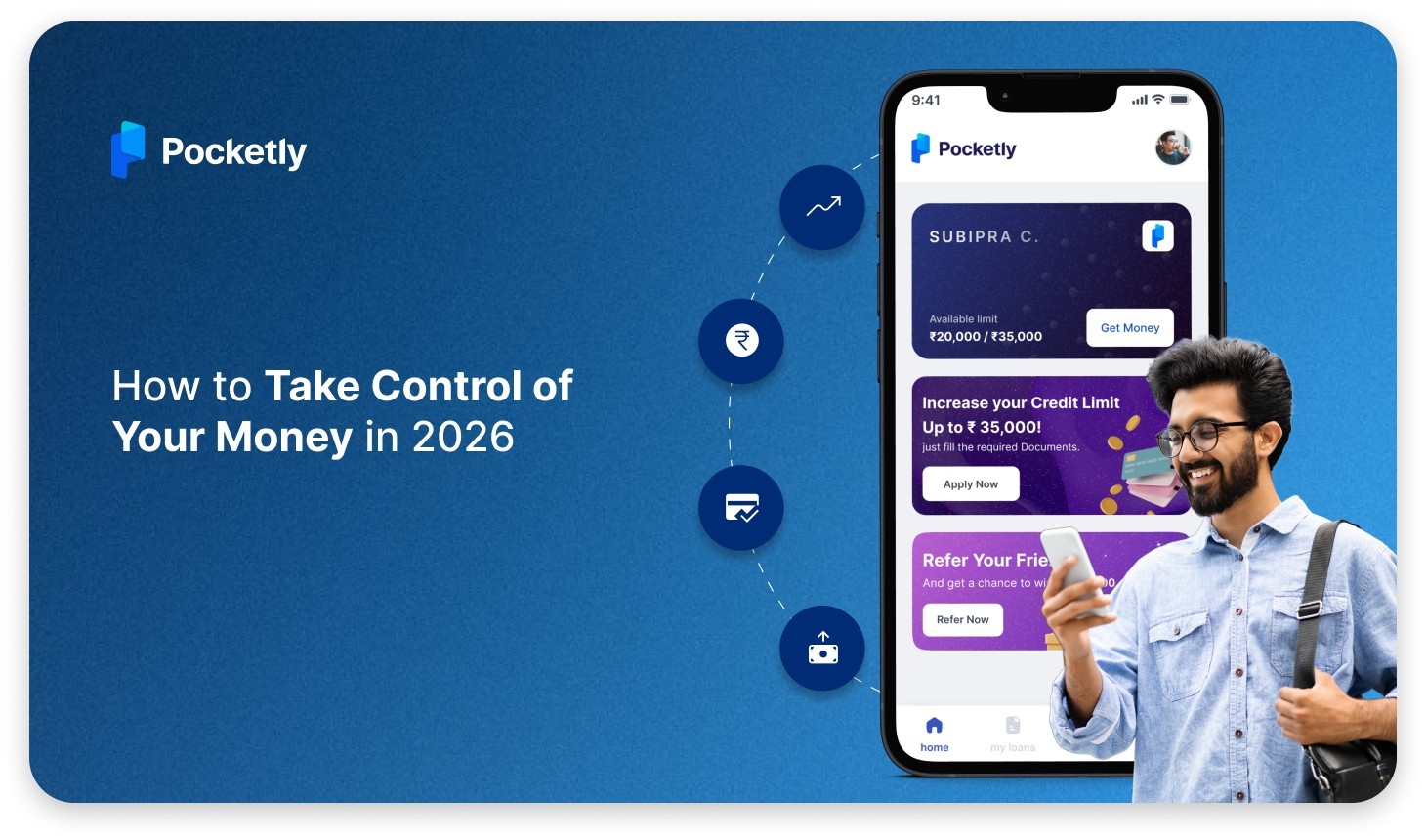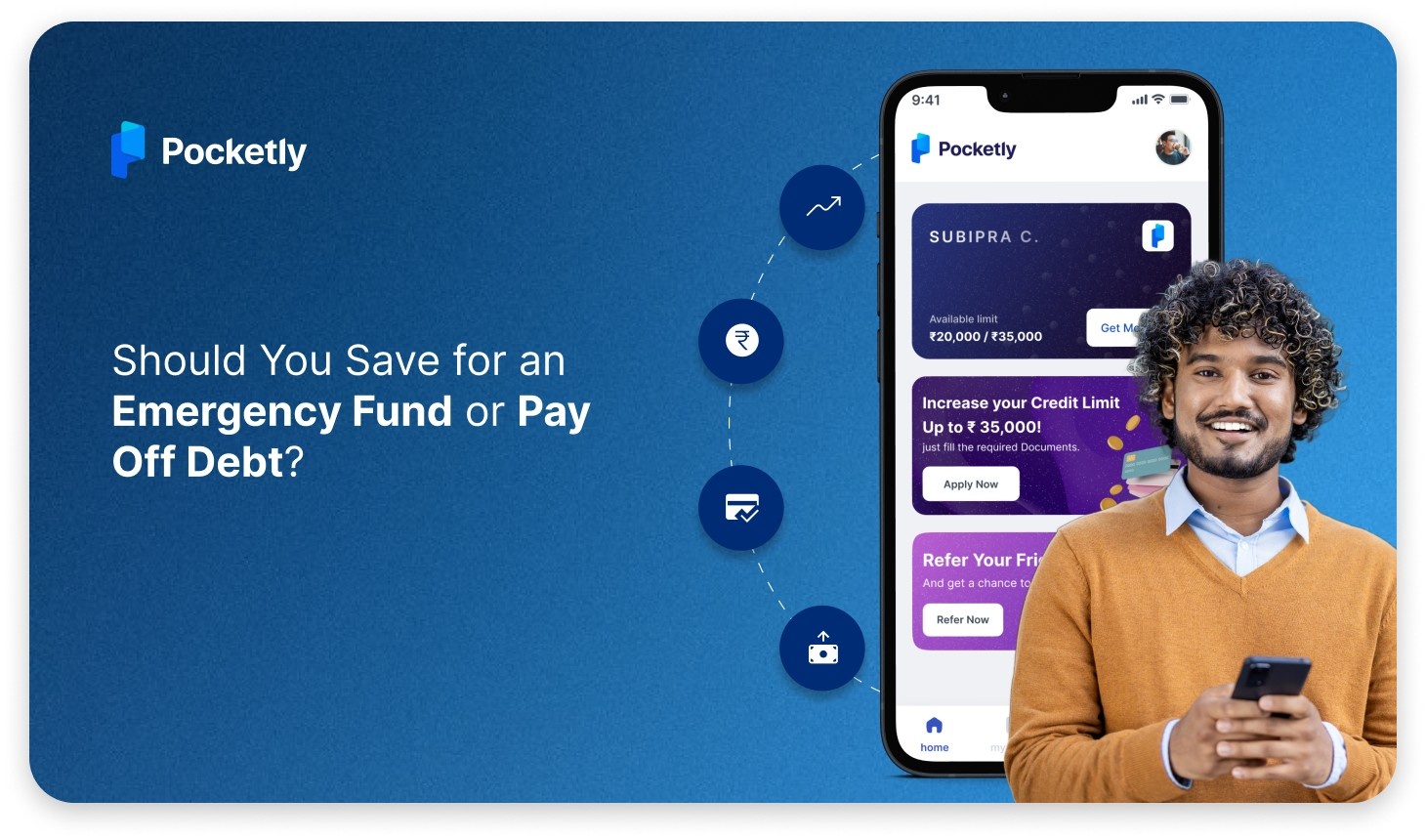
If you earn ₹25,000 a month, buying a home might feel out of reach. You may wonder things like, Will any bank give me a loan? What if I can’t manage the EMI? Or are there additional charges I’m not aware of?
These worries are completely normal. Many people feel the same way when they think about buying a house on a limited income. But here’s the good news: You can get a home loan even on a ₹25,000 salary. It’s all about knowing how things work and making smart choices.
In this blog, we’ll explain everything you need to know. You’ll learn how much loan you can get, what the EMI might look like, how to improve your chances of approval, and how to handle hidden costs. If owning a home is your dream, this guide will help you move one step closer, without the stress or confusion.
What is a Home Loan?
A home loan is basically money that banks or housing finance companies give you to buy, build, renovate, or extend a house. Instead of paying the whole price of your dream home at once, you borrow most of the amount and pay it back in small monthly payments called EMIs over a long period, sometimes up to 30 years or more. The house you buy or build with the loan acts as a kind of security for the bank, so if you can’t pay back the loan, the bank can take the property.
Benefits of Home Loan In India
A home loan helps you own a home sooner by spreading the cost over time, and the house itself is what keeps the bank safe until you’ve paid everything off. Home loans in India come with several benefits that make them an attractive option for those looking to purchase a home. Here are some of the key advantages:
- Ownership of Property: A home loan helps you buy your own property, allowing you to own a home even if you don't have enough funds upfront. It’s an investment in your future and gives you a sense of security.
- Affordable EMIs: With long repayment tenures (usually up to 30 years), home loans make owning a home more affordable by spreading out the cost through smaller monthly payments, or EMIs (Equated Monthly Installments).
- Tax Benefits: Home loans offer tax deductions under Section 80C (on principal repayment) and Section 24(b) (on interest payments) of the Income Tax Act. This can reduce your overall tax liability, making it financially beneficial.
- Access to Higher Loan Amounts: Home loans are secured loans, meaning they are backed by the property you buy. This allows you to access higher loan amounts compared to unsecured loans like personal loans.
- Building Credit History: Regularly paying off your home loan can help build and improve your credit score, which can be beneficial for securing other loans in the future, such as personal loans or car loans.
Home loans in India help purchase a property and provide a range of financial benefits that make homeownership more accessible and affordable.
While the benefits are clear, qualifying for a home loan depends on specific factors. Let’s look at what lenders evaluate when reviewing applications for a home loan on a 25000 salary.
Eligibility for a Home Loan on a 25000 Salary In India
When you apply for a loan as a salaried person in India, lenders check several key factors to decide how much they can lend and whether you’re a reliable borrower. Here’s what matters most:
1. Age
Most banks prefer applicants aged between 21 and 65 years old. Younger applicants may qualify for longer loan tenures (up to 30 years), which means lower EMIs and higher eligibility.
2. Job Stability
Having at least 2–3 years of steady employment (especially with the same employer) signals stable income, something lenders value. Frequent job changes may raise concerns.
3. Monthly Income & DTI Ratio
Your Debt-to-Income (DTI) ratio, the portion of income spent on EMIs, should ideally be below 40–50%. Lower DTI = higher loan eligibility. So, if you earn ₹25,000/month, keeping existing EMIs low helps increase your borrowing capacity.
4. Credit Score (CIBIL)
A score of 700+ is generally expected, while 750+ is ideal. A good score means a timely repayment history and boosts chances of approval, better interest rates, and quicker processing.
5. Existing Debts
Loans and credit card dues reduce your loan eligibility. The higher your ongoing debt, the lower the amount you can borrow.
6. Property Value & LTV Ratio
Lenders finance 75%–90% of a property’s value under the Loan-to-Value (LTV) ratio. For properties under ₹30 lakhs, up to 90% funding is common. The rest is your down payment.
Also read: Basic Salary Calculation: Factors, Deductions, and Tax Liability.
Understanding the eligibility criteria is one thing, but how much loan can you actually expect to get on this income? Let’s break it down.
How Much EMI Do You Have to Pay for a Home Loan on a 25000 Salary?
Before taking a home loan, it’s super important to understand how your EMI (Equated Monthly Installment) is calculated. Your EMI is the fixed amount you pay to the bank every month. It includes both the principal (loan amount) and the interest.
There’s a formula to calculate EMI manually:
EMI = P × r × (1 + r)^n / ((1 + r)^n – 1)
Where:
- P = Loan amount
- r = Monthly interest rate (annual interest ÷ 12 ÷ 100)
- n = Total number of monthly payments (loan tenure in months)
Let’s take an example:
Say you get a home loan of ₹15 lakhs at 8.5% interest per year for a period of 20 years (which is 240 months).
- P = ₹15,00,000
- r = 0.007083 (which is 8.5 ÷ 12 ÷ 100)
- n = 240 months
If you plug these into the formula or use an EMI calculator, the EMI comes out to around ₹13,000 to ₹13,500 per month.
That’s actually doable on a ₹25,000 monthly salary, as long as your other expenses or loans are limited. Most banks look at your DTI (Debt-to-Income) ratio, which should ideally be 40-50% or less. This just means your monthly loan payments shouldn’t take up more than half your income.
But if you are in urgent need of funds but do not want to be bothered with lengthy loan procedures, you can choose Pocketly. Pocketly offers instant loans for salaried individuals from ₹1,000 to ₹25,000 with an interest rate starting from just 12% per annum.
Now let's discuss about what documents are generally required for a home loan.
Documents Required for Home Loan on a 25000 Salary
Getting a home loan is easier when your paperwork is in order. Lenders rely on these documents to check your identity, income, and the property details. Here’s a simple checklist to help you get everything ready. Here are the documents you require to present to get a home loan:
You must submit passport-size photographs and a completed loan application form, along with the following core documents:
- Identity Proof (Any one): PAN Card, Aadhaar Card, Passport, Driving License, Voter ID, Photo Identity card issued by current Employer.
- Residence Proof (Any one): Electricity Bill, Telephone Bill (Landline), Aadhaar Card, Driving License, Passport, Voter ID.
- Income Proof (for Salaried Persons):
- Original/Certified copy of the latest salary slips for the past 3 months.
- Copies of IT returns of the last 2 years, duly acknowledged by the IT Dept/IT assessment orders or Form 16 for the last 2 years from the Employer.
- Bank Account (Salaried Account) statement for the last 6 months (or 12 months if from other banks).
- An undertaking from the employer for remittance of the monthly installment, wherever feasible.
- Property Documents:
- Title deeds of the property and link documents for the last 13 years.
- Encumbrance Certificate for the past 13 years.
- Khata Certificate/ Khata Extract.
- Up-to-date tax paid receipts of the property.
- Copy of the approved plan for construction/extension/addition.
- NOC from the builder or housing society.
- Detailed estimate of construction costs (for construction loans).
- Other Documents:
- Guarantor forms along with net worth proof/income proof (if applicable).
- Loan Outstanding statement and loan account statement for the last 12 months (in case of takeover/refinance).
Submitting complete and accurate documents from the start can make your home loan process smooth and fast. Double-check your paperwork before you apply—it saves time and avoids delays!
How to Increase Eligibility for Your Home Loan on a 25000 Salary
While a ₹25,000 salary makes one eligible for a home loan, maximizing the loan amount and securing favorable terms requires strategic planning. You can boost your home loan eligibility and secure better terms by taking smart, focused steps. Here's how:
1. Improve Your Credit Score
Aim for a CIBIL score of 750+. Pay EMIs and credit card bills on time, avoid multiple credit applications, and regularly check your credit report for errors. A high score means better approval chances and lower interest rates.
2. Reduce Existing Debts
Clear high-interest loans and credit card dues to lower your Debt-to-Income (DTI) ratio. Keeping your DTI below 50% frees up income for a new loan and signals better repayment capacity.
3. Add a Co-Applicant
Include a working spouse or family member as a co-applicant to combine incomes, increasing your loan eligibility. Some lenders also offer interest rate discounts for female co-applicants.
4. Opt for a Longer Tenure
Choose a loan term of up to 30 years to reduce EMIs. Lower monthly payments help stay within acceptable DTI limits and improve eligibility, though total interest paid may be higher.
5. Make a Higher Down Payment
Pay more upfront to reduce the loan amount required. This lowers the lender’s risk, improves approval chances, and may get you better terms.
6. Declare All Income Sources
Mention all income beyond salary, rental income, side business, freelance work, etc. Supporting documents or transaction records can enhance credibility and boost eligibility.
7. Build a Relationship with Your Bank
Open and maintain a savings account with your preferred lender. A positive banking history builds trust and can ease the approval process, especially if your income is partially informal.
8. Explore Mortgage Guarantee-Backed Loans
Consider lenders partnered with IMGC. These loans reduce lender risk and may help you get higher loan amounts or longer tenures, especially useful for borderline profiles or older applicants.
Focus on maintaining a strong credit score, managing debts, using co-applicants, declaring all income, and choosing flexible loan options. Small steps can significantly improve your eligibility, even on a modest income.
Improving your eligibility is one part of the equation. The other is ensuring your documents are in order, because smooth paperwork can fast-track your loan approval process.
While you are eligible to apply for a home loan, hidden charges often catch you off guard. Knowing these in advance helps you plan better.
Hidden Costs and Charges for a Home Loan on a 25000 Salary
When taking a home loan, your EMI and interest rate aren't the only costs. There are several lesser-known charges that can increase your total loan expense. Being aware of them upfront helps you plan better and avoid surprises. Borrowers should anticipate the following charges:
- Processing Fees: Usually 0.25% to 1% of the loan amount or a fixed fee. Some banks waive this for specific schemes
- Legal & Technical Charges: Covers legal document checks and property valuation. Charged separately.
- Stamp Duty: Paid during property registration and on the loan agreement. It can be a major cost depending on the state.
- MODT Charges (Memorandum of Deposit of Title Deed): Charged in some states, like Maharashtra. A % of the loan amount for creating an equitable mortgage.
- NOI (Notice of Intimation) Charges: Also specific to certain states (e.g., Maharashtra) for equitable mortgage.
- CERSAI Registration Fee: A central registry fee for securitization, asset reconstruction, and security interest.
- Vetting Charges: Fees for detailed scrutiny of documents.
- Property Insurance Premium: Compulsory insurance of the house/flat against risks like fire, lightning, riots, earthquake, and floods.
- Pre-payment/Pre-closure Charges: While many floating rate home loans in India do not have these charges, it's essential to confirm. Fixed-rate loans might incur such penalties.
The Reddit discussion shared that they weren’t aware of all these extra charges until the money was already deducted. This shows how important it is to understand all the costs involved, not just the interest rate and EMI.
Unexpected costs like legal fees, stamp duty, or processing charges can catch you off guard when taking a home loan. That’s where Pocketly can help. Pocketly offers flexible short-term loans of up to ₹25,000 to cover these unexpected expenses. The interest starts as low as 2% per month, and the processing fee ranges from just 1% to 8% of the loan amount. It’s a fast, convenient way to get funds when you need them most.
Why Choose Pocketly for an Instant Loan as a Salaried Person
Whether it’s for covering surprise expenses or meeting your short-term needs, here’s why Pocketly stands out as a reliable and flexible loan option for salaried individuals:
Fast Approval & Swift Disbursal: In urgent need of cash? With Pocketly, your loan is approved within minutes, and funds are transferred to your account almost instantly.
Customizable Loan Amounts: Whether you require a small emergency fund of ₹1,000 or a larger amount up to ₹25,000, Pocketly offers flexible loan options tailored to your specific needs.
Simplified Documentation: Forget about lengthy paperwork and complicated forms. Just submit your basic KYC documents, and you're all set!
Clear and Transparent Fees: No hidden charges or surprises. You’ll receive upfront details about interest rates and processing fees, making it easy to plan your repayments.
No Credit Score Restrictions: Even if you have a low or limited credit score, Pocketly provides a fair opportunity to access funds, unlike traditional banks that might reject your application.
Flexible Repayment Plans: Choose a repayment schedule that aligns with your budget, making loan repayment smooth and stress-free.
With Pocketly, enjoy a seamless borrowing experience, quick, transparent, and customized to your needs. That’s how borrowing should be!
If you are wondering how you can apply for a loan with Pocketly, the next section will explain.
How to Apply for Pocketly’s Transparent Loan for 25000 Salary
Getting a loan through Pocketly is super easy and doesn’t take much time. Just follow these simple steps:
Step 1: Download and Sign Up
First, download the Pocketly app from the Google Play Store or the Apple App Store. Then, sign up using your mobile number to create your account.
Step 2: Upload Your Documents
Next, upload your basic KYC documents like your Aadhaar card and PAN card. Make sure the photos are clear to avoid any delays in the process.
Step 3: Complete the KYC Process
Verify your identity through Pocketly’s KYC process. Some users might get access to a quick video KYC, which speeds things up even more.
Step 4: Add Your Bank Details
Enter your bank account information so that once the loan is approved, the money can be transferred directly to your account safely.
Step 5: Choose Your Loan Amount and Tenure
Select how much you want to borrow and pick a repayment period that suits you. Pocketly gives you flexible options, so you can repay at your own pace.
Step 6: Receive the Funds Instantly
Once your loan is approved, the money will be sent to your bank account almost instantly. So you get access to the funds when you need them most.
That’s it! With Pocketly, the entire loan process is quick, smooth, and completely stress-free.
Even if your current eligibility is limited, there are strategic steps you can take to improve it. Here’s how you can boost your chances of approval and secure better loan terms.
Final Words!
Owning a home on a ₹25,000 monthly salary might seem challenging, but with the right information and a proactive approach, it's entirely within reach. By understanding your loan eligibility, maintaining a strong credit profile, and preparing the right documents, you can take confident steps toward homeownership. Smart planning and awareness of hidden costs can further ease your journey and help you make better financial decisions.
While you're working toward your long-term dream of owning a home, short-term cash needs can still pop up, such as unexpected expenses, documentation costs, or a missed EMI deadline. That’s where Pocketly steps in. With instant personal loans from ₹1,000 to ₹25,000, flexible repayment options, and minimal documentation, Pocketly makes short-term borrowing simple, stress-free, and lightning-fast.
Struggling to Handle Upfront Costs While Planning Your Home Loan? Download the Pocketly App now and take control of your financial journey—whether it’s owning your dream home or managing the little hurdles along the way.
FAQs
1. Can I really get a home loan with a ₹25,000 monthly salary?
Yes, you can. Many banks and housing finance companies offer home loans to individuals with modest incomes, especially if you meet basic eligibility criteria like a good credit score, job stability, and a low debt-to-income (DTI) ratio. Government-backed housing schemes and longer loan tenures also help make this possible.
2. How much home loan am I eligible for on a ₹25,000 salary?
Typically, you can get a home loan ranging from ₹15 lakhs to ₹20.85 lakhs, depending on your credit profile, existing debts, age, loan tenure, and property value. Lenders use your DTI ratio and credit score to assess your repayment capacity.
3. How can I improve my home loan eligibility on a ₹25,000 salary?
You can improve your eligibility by:
- Maintaining a credit score of 750+
- Reducing existing debts or EMIs
- Adding a co-applicant (like a spouse)
- Opting for a longer repayment tenure
- Declaring additional sources of income
Taking these steps can help you qualify for a higher loan amount and secure better interest rates.















